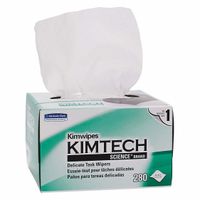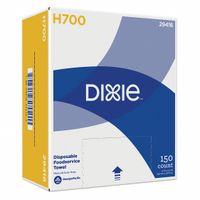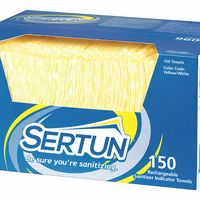Call +(254) 703 030 000 / 751 483 999 / 721 704 777
.....Read More
Frequently Asked Questions
What are dry wipes used for?
Dry wipes are versatile cleaning tools used across various settings for different purposes. In healthcare, they are employed for patient care, such as cleaning skin before medical procedures or for personal hygiene. They are often used in conjunction with disinfectants or antiseptics to maintain sterility and prevent infections.
In households, dry wipes serve as convenient cleaning aids for dusting surfaces, wiping spills, and general cleaning tasks. They are particularly useful for cleaning delicate surfaces like electronics, as they do not leave behind lint or residue. Some dry wipes are designed to be used with cleaning solutions, allowing users to customize their cleaning approach based on the task at hand.
In industrial and commercial settings, dry wipes are used for maintaining equipment, cleaning workspaces, and ensuring hygiene in food preparation areas. They are often preferred for their durability and ability to absorb oils, grease, and other industrial residues.
For personal care, dry wipes are used in beauty and skincare routines, such as removing makeup or applying skincare products. They are gentle on the skin and can be used with water or skincare solutions.
In childcare, dry wipes are used for cleaning babies during diaper changes or for wiping hands and faces. They are a convenient option for parents due to their portability and ease of use.
Overall, dry wipes are valued for their versatility, convenience, and ability to be used with various cleaning agents, making them an essential tool in maintaining cleanliness and hygiene across different environments.
How do dry wipes differ from wet wipes?
Dry wipes are essentially pieces of fabric or paper that are not pre-moistened. They are typically used for general cleaning tasks, such as dusting or wiping surfaces, and can be used with cleaning solutions or water as needed. Dry wipes are often more versatile because they can be used with a variety of cleaning agents, allowing users to customize their cleaning approach based on the task at hand. They are also generally more durable and can be reused multiple times, depending on the material.
Wet wipes, on the other hand, are pre-moistened with a solution, which can include water, alcohol, disinfectants, or other cleaning agents. They are designed for convenience and are ready to use straight out of the package, making them ideal for quick clean-ups or on-the-go use. Wet wipes are commonly used for personal hygiene, such as baby wipes or makeup removal wipes, as well as for sanitizing surfaces. The pre-moistened nature of wet wipes means they are single-use and disposable, which can be less environmentally friendly compared to reusable dry wipes.
In summary, the primary difference between dry and wet wipes lies in their moisture content and intended use. Dry wipes offer versatility and reusability, while wet wipes provide convenience and immediate usability.
Are dry wipes reusable?
Dry wipes can be reusable, but it largely depends on the material they are made from and their intended use. Many dry wipes are designed for single-use, especially those made from non-woven materials like polyester or polypropylene, which are not durable enough to withstand multiple uses. These are typically used for tasks like cleaning or sanitizing and are meant to be disposed of after one use to maintain hygiene and effectiveness.
However, some dry wipes are made from more durable materials, such as cotton or microfiber, which can be washed and reused multiple times. These types of wipes are often marketed as eco-friendly alternatives to disposable wipes and are suitable for tasks like dusting, cleaning surfaces, or personal care. They can be machine-washed or hand-washed, depending on the manufacturer's instructions, and reused until they show signs of wear and tear.
When considering reusability, it's important to assess the purpose of the wipe. For instance, wipes used for cleaning up hazardous materials or bodily fluids should not be reused due to the risk of contamination and the spread of germs. In contrast, wipes used for less critical tasks, like dusting or wiping down non-contaminated surfaces, can be reused if they are made from a washable material.
In summary, while some dry wipes can be reused, it is essential to consider the material, intended use, and hygiene implications. Reusable wipes made from durable materials can be a sustainable choice, but they should be properly cleaned and maintained to ensure they remain effective and safe for use.
Can dry wipes be used on all surfaces?
Dry wipes can be used on many surfaces, but their suitability depends on the material and the intended purpose. They are generally safe for non-porous surfaces like glass, metal, and plastic, where they can effectively remove dust and light debris. However, caution is advised on delicate surfaces such as untreated wood, as dry wipes may cause scratches or leave behind fibers. On electronic screens, dry wipes can be used, but it's better to use those specifically designed for electronics to avoid static buildup or scratches. For surfaces that require disinfection, dry wipes alone are insufficient; they need to be used in conjunction with a cleaning agent. Always check the manufacturer's guidelines for both the wipes and the surface to ensure compatibility and avoid damage.
How do you dispose of dry wipes?
To dispose of dry wipes, follow these steps:
1. **Check Local Regulations**: Before disposal, check local waste management guidelines as rules can vary by location.
2. **Do Not Flush**: Never flush dry wipes down the toilet as they can cause blockages in plumbing and sewage systems.
3. **Separate from Recyclables**: Dry wipes are typically not recyclable, so keep them separate from recyclable materials.
4. **Use a Trash Bin**: Place used dry wipes in a regular trash bin. If possible, use a bin with a lid to contain any odors.
5. **Consider Composting**: If the wipes are made from natural fibers and are free from chemicals, they may be compostable. Check the packaging for compostability information and local composting guidelines.
6. **Bagging**: For hygiene purposes, especially if the wipes were used for cleaning, consider placing them in a small plastic or biodegradable bag before disposing of them in the trash.
7. **Bulk Disposal**: If disposing of a large quantity, ensure they are securely bagged to prevent scattering during waste collection.
8. **Eco-Friendly Options**: Consider switching to eco-friendly or biodegradable wipes in the future to reduce environmental impact.
9. **Community Programs**: Some areas have specific programs for disposing of personal care products. Check if such options are available.
10. **Educate Others**: Share proper disposal methods with family and friends to promote responsible waste management.
Are dry wipes safe for skin contact?
Yes, dry wipes are generally safe for skin contact. They are designed to be gentle and non-abrasive, making them suitable for various skin types, including sensitive skin. Dry wipes are typically made from soft, non-woven materials like cotton, polyester, or a blend of fibers, ensuring they do not irritate the skin. They are often used in healthcare settings, personal care routines, and for cleaning purposes.
However, the safety of dry wipes can depend on their intended use and the materials they are made from. It is important to choose wipes that are free from harmful chemicals, fragrances, or dyes, especially if you have sensitive skin or allergies. Some dry wipes are designed to be used with water or a cleansing solution, which can enhance their cleaning effectiveness without compromising skin safety.
For individuals with specific skin conditions or allergies, it is advisable to test a small area of skin before using a new type of dry wipe extensively. This can help ensure there is no adverse reaction. Additionally, using wipes that are dermatologically tested and approved can provide extra assurance of their safety for skin contact.
In summary, while dry wipes are generally safe for skin contact, it is important to select high-quality products and be mindful of any personal skin sensitivities or allergies.
What materials are dry wipes made from?
Dry wipes are typically made from a variety of materials, each chosen for specific properties such as absorbency, strength, and softness. Common materials include:
1. **Nonwoven Fabrics**: These are the most prevalent materials used in dry wipes. Nonwoven fabrics are made by bonding fibers together through chemical, mechanical, heat, or solvent treatment. They can be composed of natural fibers like cotton or synthetic fibers such as polyester, polypropylene, or rayon.
2. **Cotton**: Known for its softness and absorbency, cotton is often used in high-quality dry wipes. It is biodegradable and hypoallergenic, making it suitable for sensitive skin.
3. **Polyester**: This synthetic fiber is durable and resistant to stretching and shrinking. Polyester is often blended with other fibers to enhance the strength and durability of the wipes.
4. **Polypropylene**: Another synthetic fiber, polypropylene is lightweight and resistant to moisture. It is often used in combination with other materials to improve the wipe's performance.
5. **Rayon**: Made from regenerated cellulose fiber, rayon is soft and absorbent. It is often used in combination with other fibers to enhance the texture and absorbency of the wipes.
6. **Viscose**: Similar to rayon, viscose is a type of rayon made from wood pulp. It is soft, absorbent, and biodegradable, making it a popular choice for eco-friendly wipes.
7. **Bamboo**: Increasingly used for its sustainability, bamboo fibers are soft, strong, and naturally antibacterial. Bamboo-based wipes are biodegradable and environmentally friendly.
These materials can be used alone or in combination to create wipes with specific characteristics tailored to their intended use, such as personal care, cleaning, or industrial applications.





